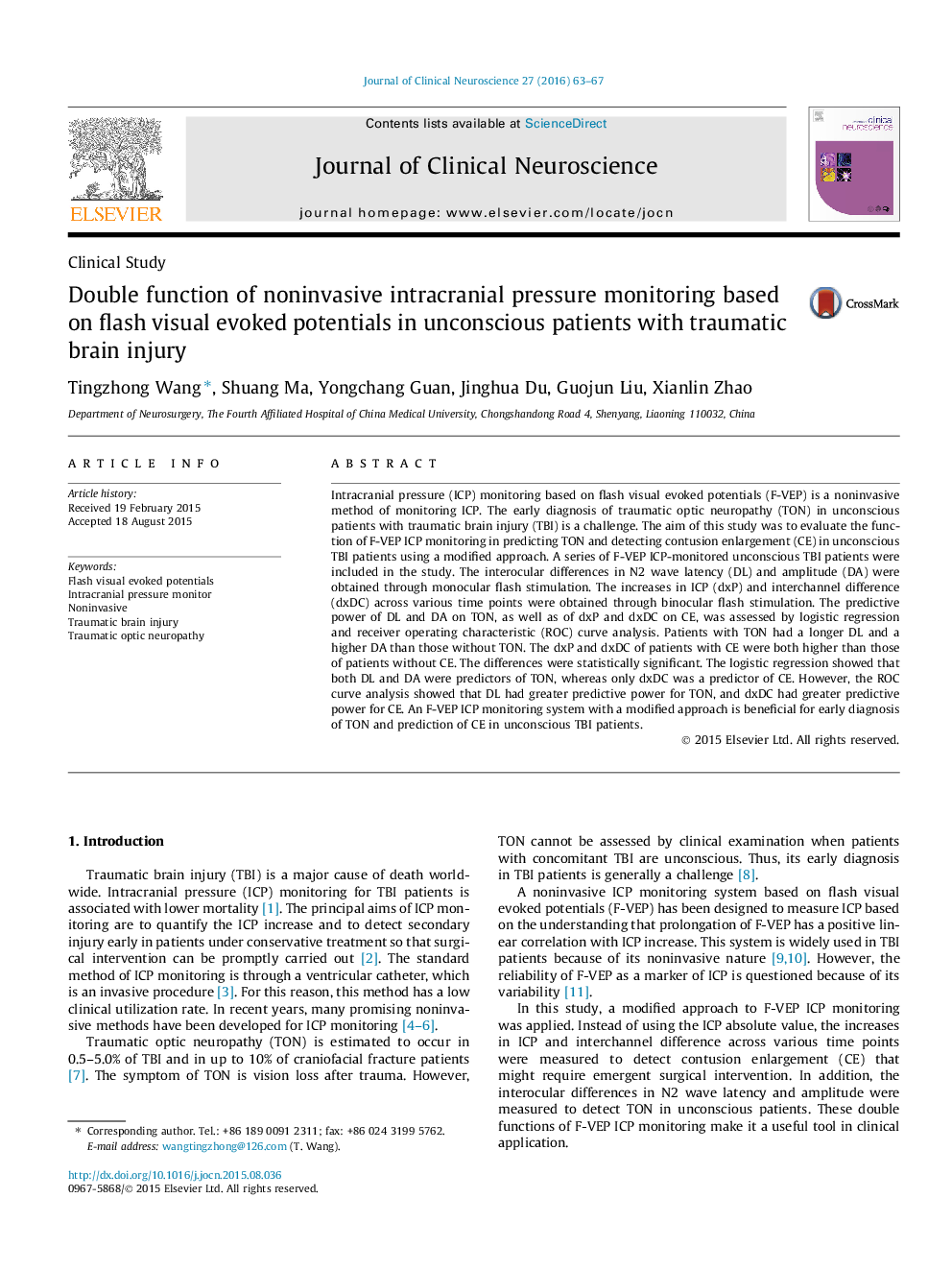| کد مقاله | کد نشریه | سال انتشار | مقاله انگلیسی | نسخه تمام متن |
|---|---|---|---|---|
| 3058238 | 1580289 | 2016 | 5 صفحه PDF | دانلود رایگان |
• The flash visual evoked potential (F-VEP) intracranial pressure (ICP) monitoring system can be applied using a modified approach in unconscious TBI patients.
• It is beneficial for diagnosing traumatic optic neuropathy early in unconscious patients.
• It is also beneficial for predicting contusion enlargement in these patients.
• The double function makes it a useful tool in clinical application.
Intracranial pressure (ICP) monitoring based on flash visual evoked potentials (F-VEP) is a noninvasive method of monitoring ICP. The early diagnosis of traumatic optic neuropathy (TON) in unconscious patients with traumatic brain injury (TBI) is a challenge. The aim of this study was to evaluate the function of F-VEP ICP monitoring in predicting TON and detecting contusion enlargement (CE) in unconscious TBI patients using a modified approach. A series of F-VEP ICP-monitored unconscious TBI patients were included in the study. The interocular differences in N2 wave latency (DL) and amplitude (DA) were obtained through monocular flash stimulation. The increases in ICP (dxP) and interchannel difference (dxDC) across various time points were obtained through binocular flash stimulation. The predictive power of DL and DA on TON, as well as of dxP and dxDC on CE, was assessed by logistic regression and receiver operating characteristic (ROC) curve analysis. Patients with TON had a longer DL and a higher DA than those without TON. The dxP and dxDC of patients with CE were both higher than those of patients without CE. The differences were statistically significant. The logistic regression showed that both DL and DA were predictors of TON, whereas only dxDC was a predictor of CE. However, the ROC curve analysis showed that DL had greater predictive power for TON, and dxDC had greater predictive power for CE. An F-VEP ICP monitoring system with a modified approach is beneficial for early diagnosis of TON and prediction of CE in unconscious TBI patients.
Journal: Journal of Clinical Neuroscience - Volume 27, May 2016, Pages 63–67
